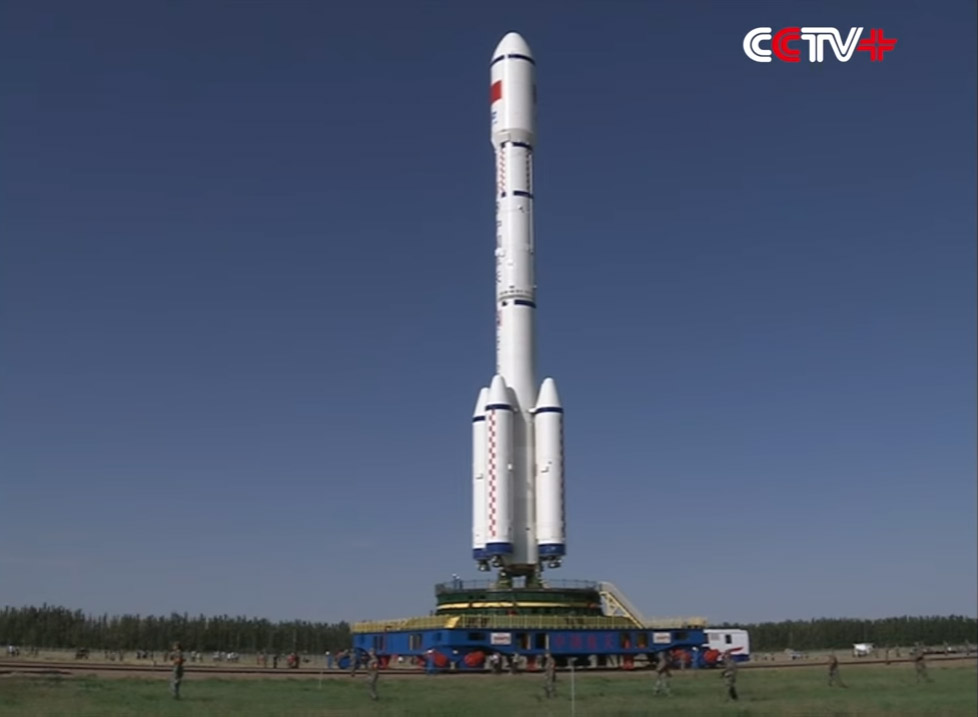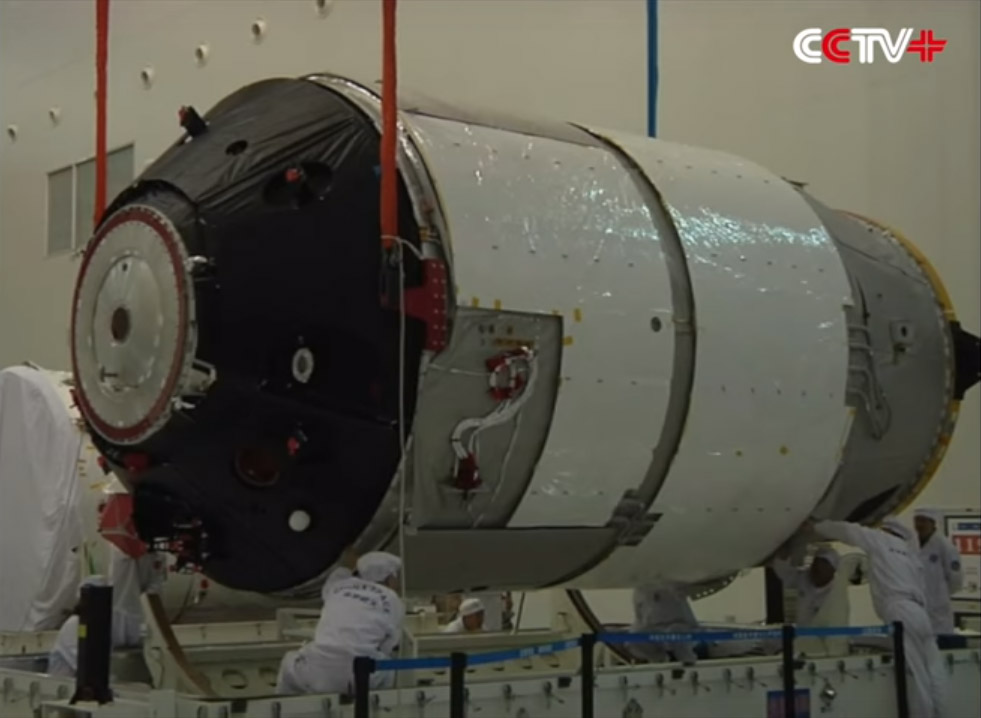
China to Launch New Tiangong-2 Space Lab Soon


China's next space laboratory — Tiangong-2 – is being prepared for a mid-September launch from the country's Jiuquan Satellite Launch Center, according to state-run media reports.
The launch of the uncrewed space module is set to occur between Sept. 15 and Sept. 20, according to a CCTV report. Tiangong-2 and its Long March 2F rocket have already rolled out from an assembly building along a 1.5-kilometer-long seamless rail track, with the rocket being covered by the tower on the launch site. Video from the CCTV+ shows the rocket and Tiangong-2 on the launchpad.
As China's second orbiting space lab, Tiangong-2 is a part of the Project 921-2 space station program, with the goal of creating a third-generation space station.
In October, China will launch two still-unnamed astronauts on the Shenzhou-11 mission to link up with the Tiangong-2. The visiting crew would stay onboard the module for 30 days, marking China's longest human spaceflight to date.
Next year, Tiangong-2 is to be visited by China's first robotic refueling and cargo vessel, Tianzhou-1. That unpiloted cargo ship is scheduled to launch in the first half of 2018 atop a Long March 7 rocket that will lift off from China's new Wenchang Satellite Launch Center spaceport on Hainan Island.
All this action is prelude to China's progression to a larger, 60-ton modular space station for the 2020s.
The core module for the Chinese space station — Tianhe-1 — is reportedly due for launch in 2018, hurled into orbit by China's heavy-lift Long March 5 booster. That rocket is set to make its maiden flight next month, departing from Wenchang.
Get the Space.com Newsletter
Breaking space news, the latest updates on rocket launches, skywatching events and more!
Leonard David is author of "Mars: Our Future on the Red Planet," to be published by National Geographic this October. The book is a companion to the National Geographic Channel six-part series coming in November. A longtime writer for Space.com, David has been reporting on the space industry for more than five decades. Follow us @Spacedotcom, Facebook or Google+. Originally published on Space.com.
Join our Space Forums to keep talking space on the latest missions, night sky and more! And if you have a news tip, correction or comment, let us know at: community@space.com.

Leonard David is an award-winning space journalist who has been reporting on space activities for more than 50 years. Currently writing as Space.com's Space Insider Columnist among his other projects, Leonard has authored numerous books on space exploration, Mars missions and more, with his latest being "Moon Rush: The New Space Race" published in 2019 by National Geographic. He also wrote "Mars: Our Future on the Red Planet" released in 2016 by National Geographic. Leonard has served as a correspondent for SpaceNews, Scientific American and Aerospace America for the AIAA. He has received many awards, including the first Ordway Award for Sustained Excellence in Spaceflight History in 2015 at the AAS Wernher von Braun Memorial Symposium. You can find out Leonard's latest project at his website and on Twitter.









